“When you go out on a story, you don’t go back for another sitting. You gotta get it.”
– Weegee (Arthur Fellig)
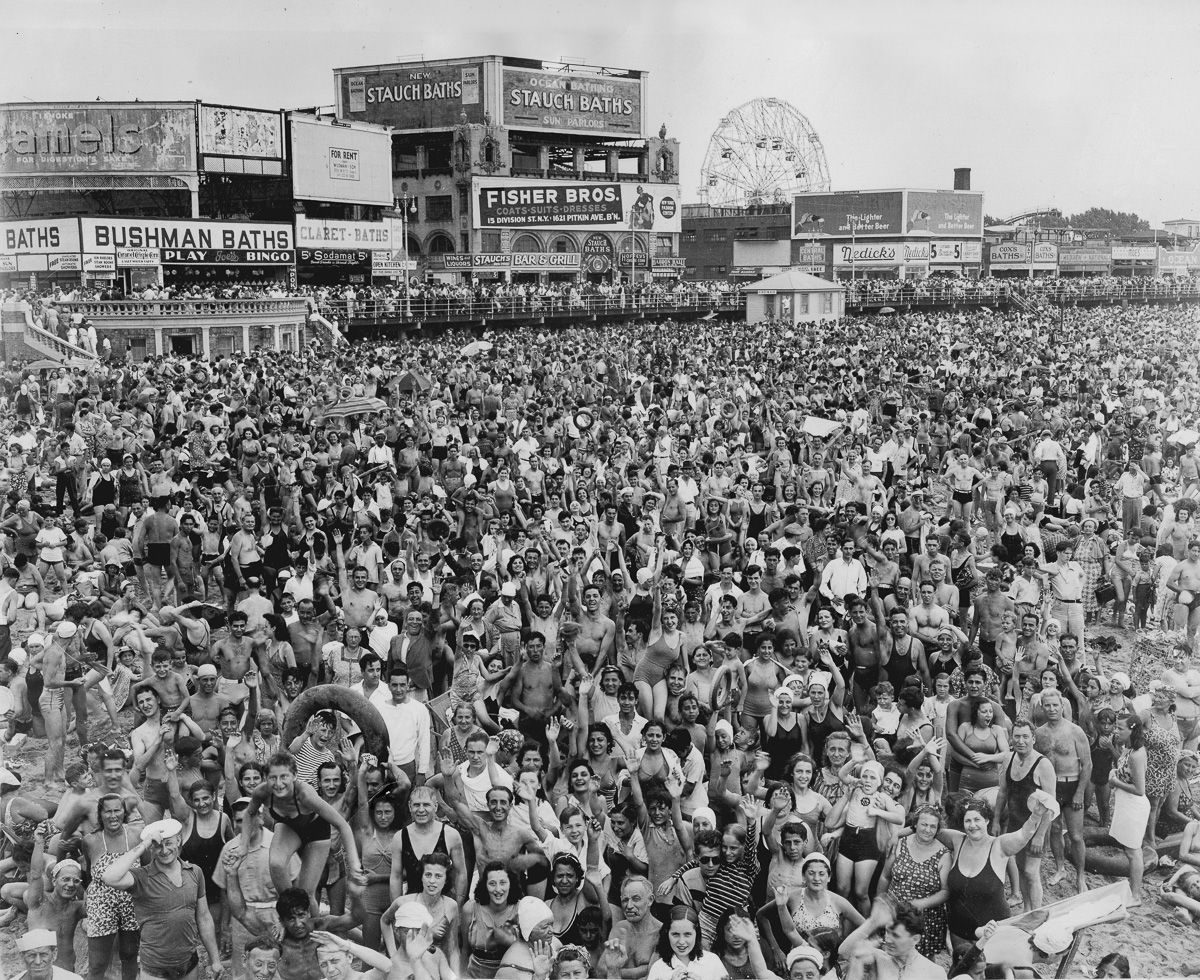
c. 1939 Nobody Works on Labor Day!
In 2012, a treasure trove of Weegee (1899–1968) pictures was found. Taken by the photographer between 1939 and 1946, they show life, death and drama in New York.
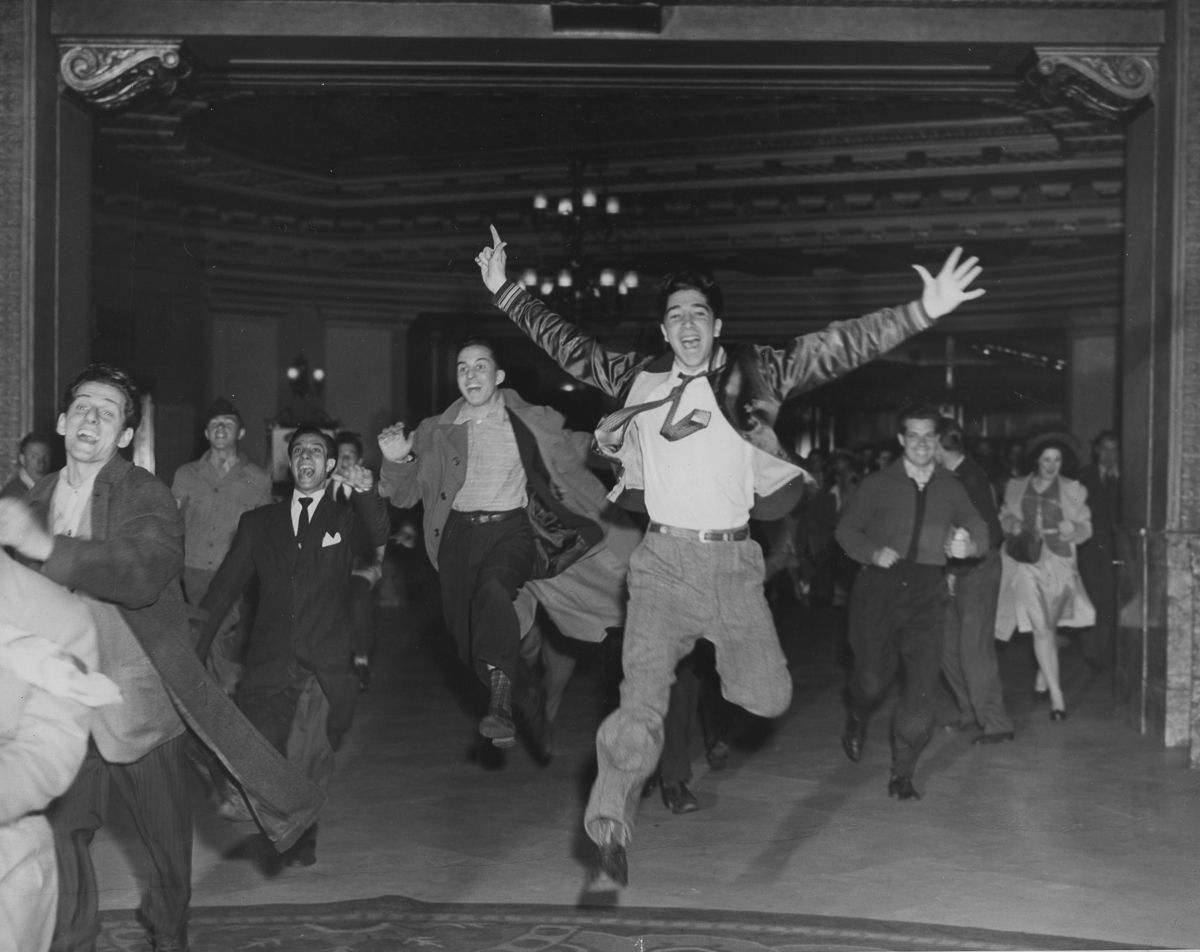
April 28, 1943 “Hep Cats in a Hurry — Hurry, Hurry, Hurry — Only 6000 Seats Left.”
Weegee was born Ascher Fellig was born in what is now Ukraine in 1899. He and his family moved with his family to New York in 1909, where in a bid to better fit in the Jewish immigrant changed his name to Arthur. He found work as a photographer’s assistant and darkroom technician for several years before, before setting up s a freelancer close to police headquarters in lower Manhattan.
That proximity to police and the police radio in his car meant he was often the first photographer to arrive at scene of crime and automobile accidents. We’ve seen his lurid and raw photos of murder on the streets of New York, the revellers and derelicts at Sammy’s on The Bowery, and his clandestine pictures of love in the dark of a NYC cinema and people watching the unfolding horror a plane hit the Empire State building.
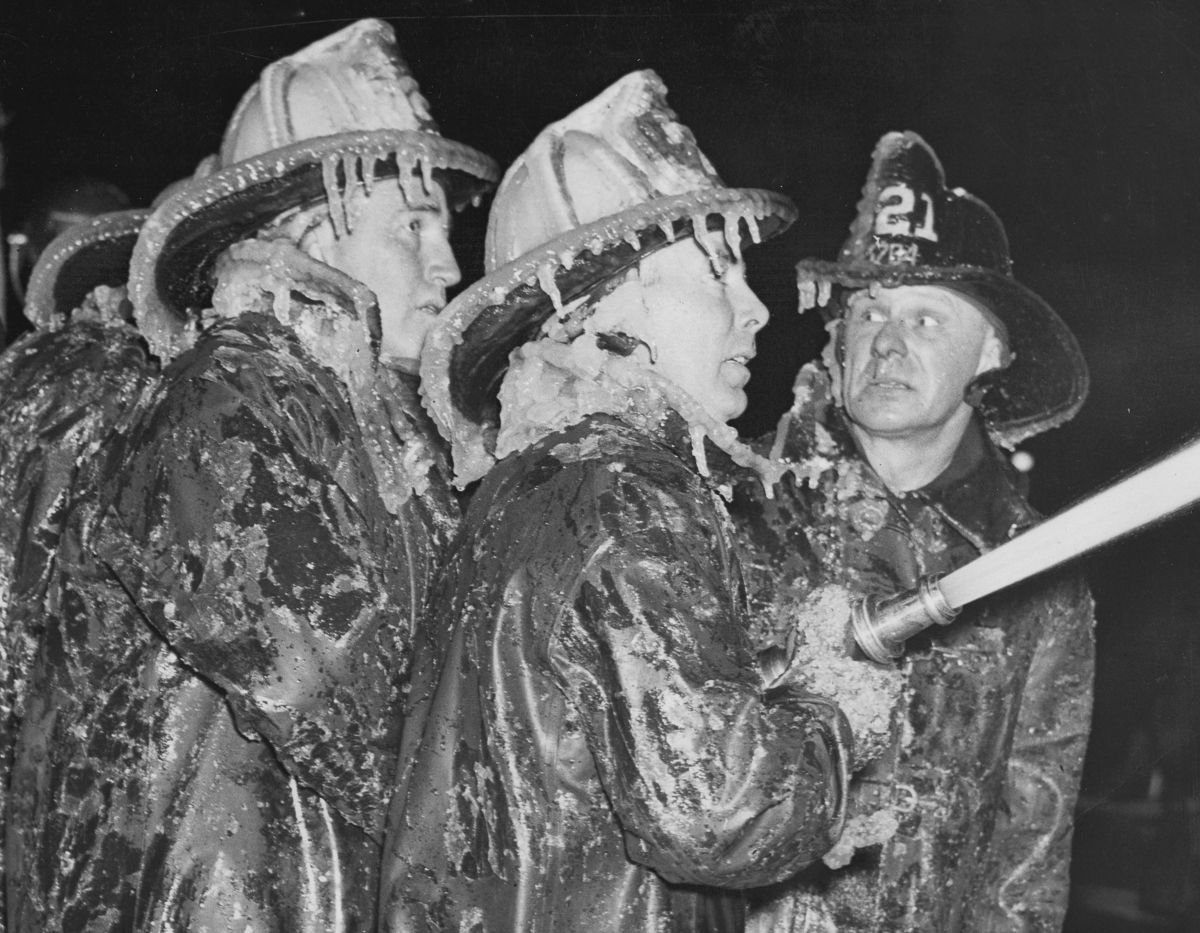
Jan. 1, 1940 “Ice Sheathed Firemen at Coney Island New Year’s Eve Fire.
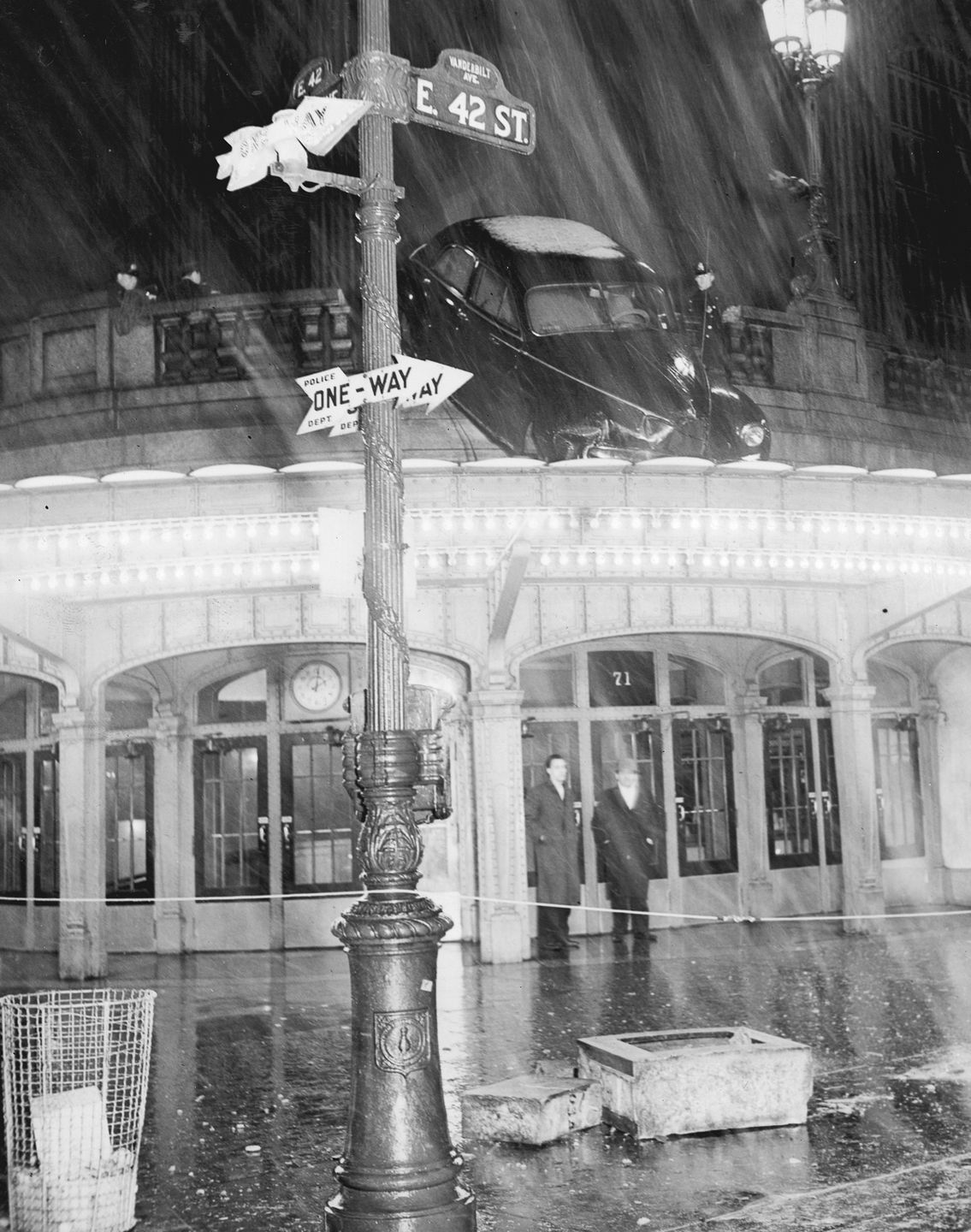
March 29, 1942 Almost a Nosedive.
Why Weegee? Moma explains:
He was a photographer so attuned to the goings on of New York’s city streets that he seemed to intuit events before their unfolding—at times he seemed possessed, like a Ouija board.
Weegee embraced this origin story, attributing “Weegee” to a simplification of “Ouija” in signing and answering fan mail, often expanding his title to “Weegee the Famous.” But in fact, his name is rooted in his beginnings in the world of press photography. Weegee worked as a “squeegee boy” in the darkrooms of the New York Times, removing excess water from prints so they could be placed on a chrome-plated sheet, which was then inserted into heated dryers.2 As his technical prowess with the process developed, the mocking “squeegee boy” assignation morphed into a praising nickname, “Mr. Squeegee,” which ultimately wore down into “Weegee.”
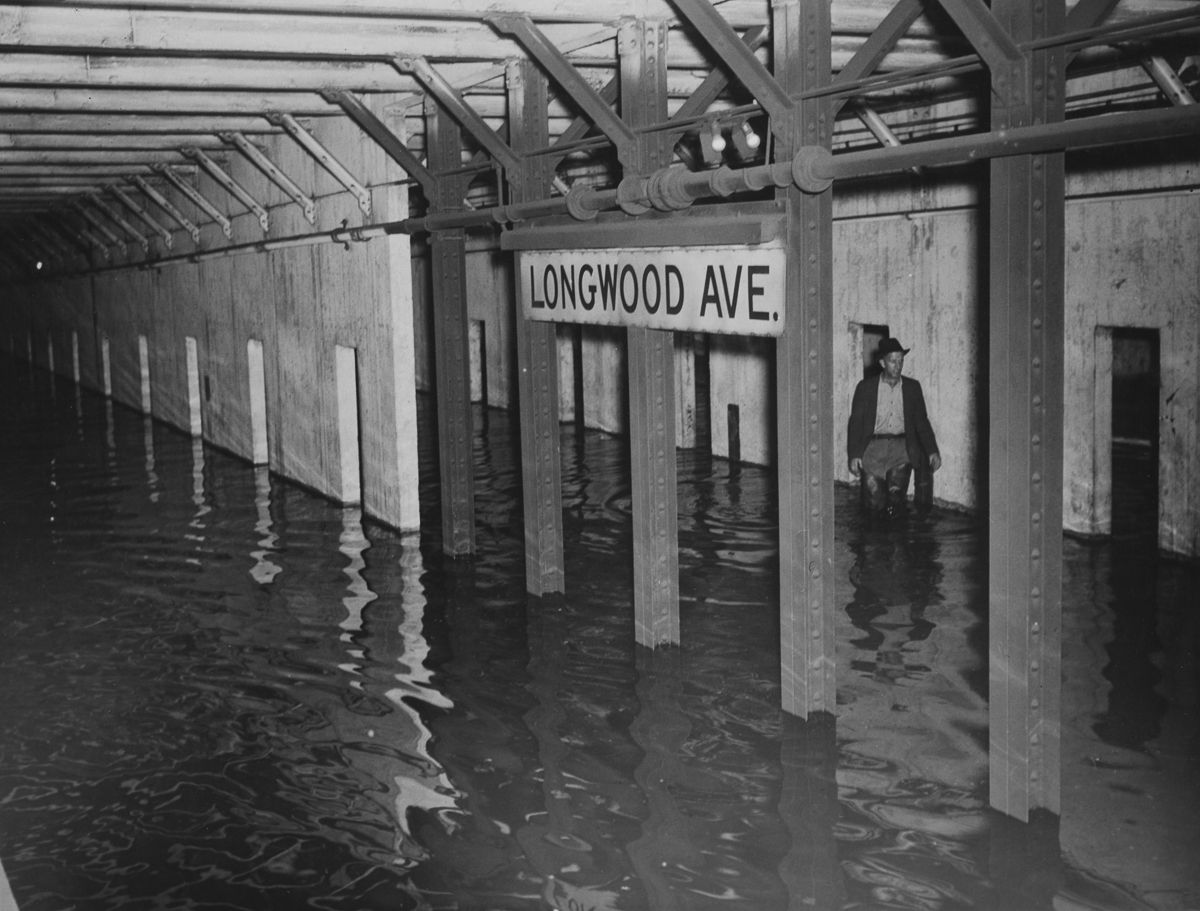
Oct. 27, 1941 Flood Halts Bronx Subway.
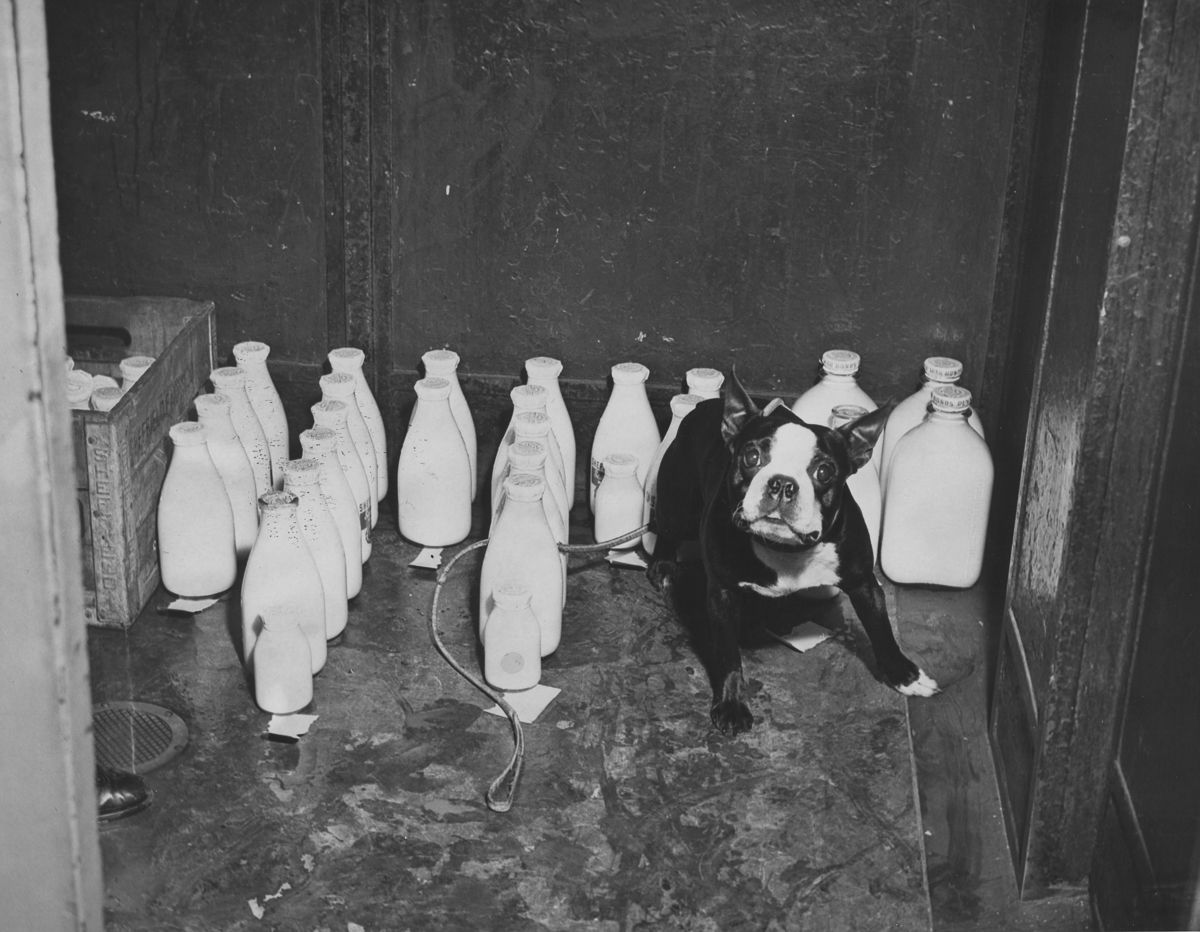
1940 Buddy the bulldog hangs out among the milk bottles in the lobby of 850 Park Avenue.
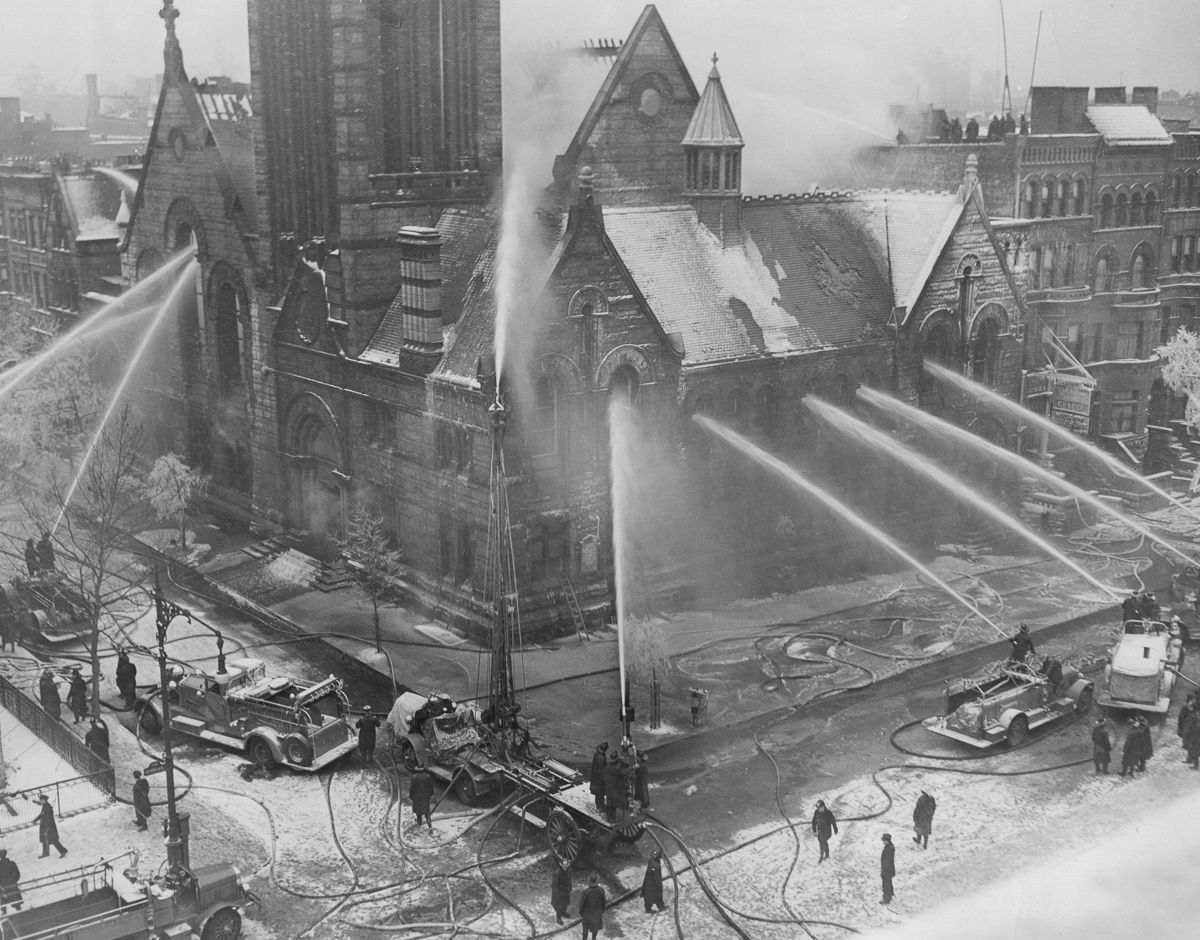
c. 1939 St. Martins Church.
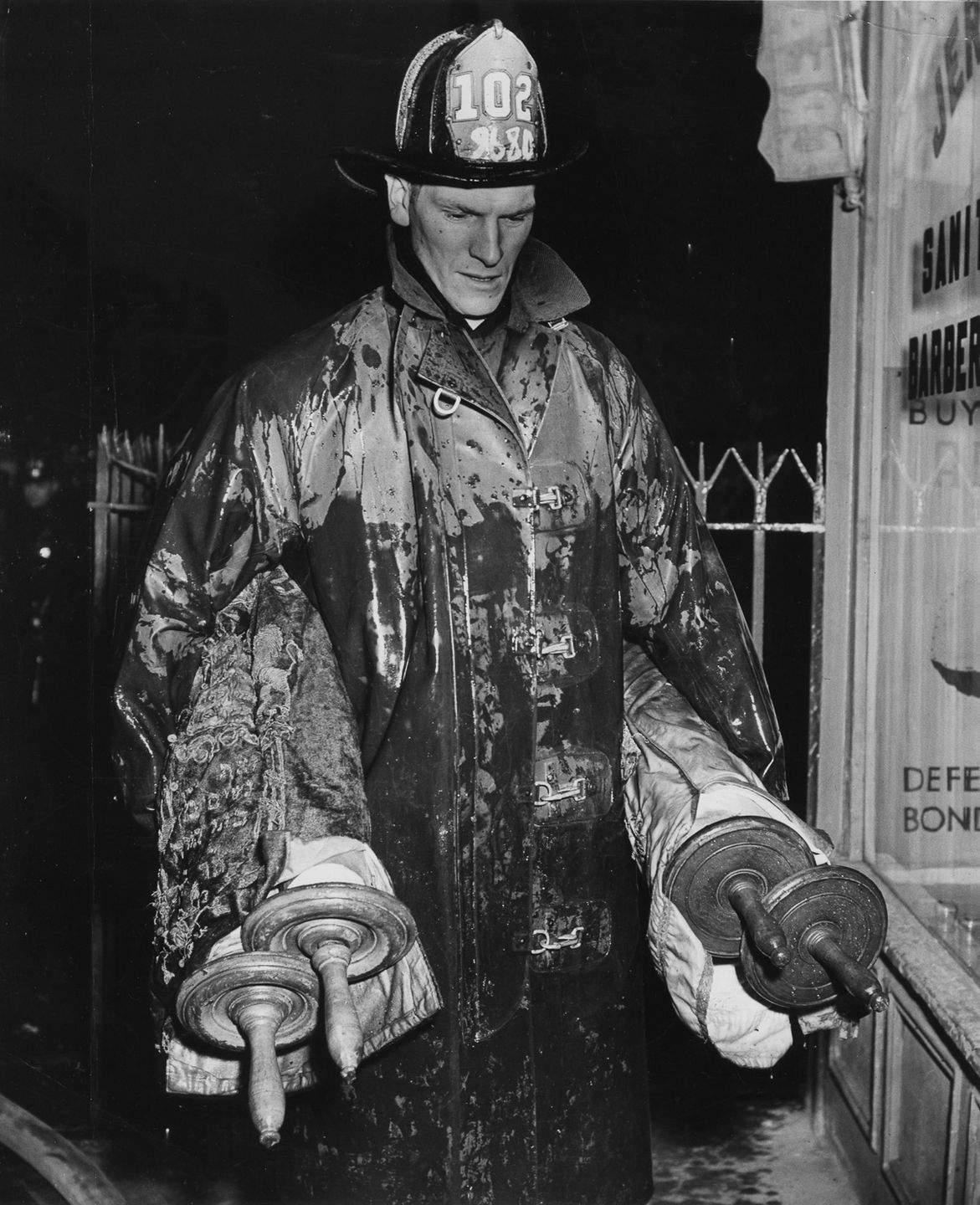
1943 “Fireman holding Torahs saved from a fire.
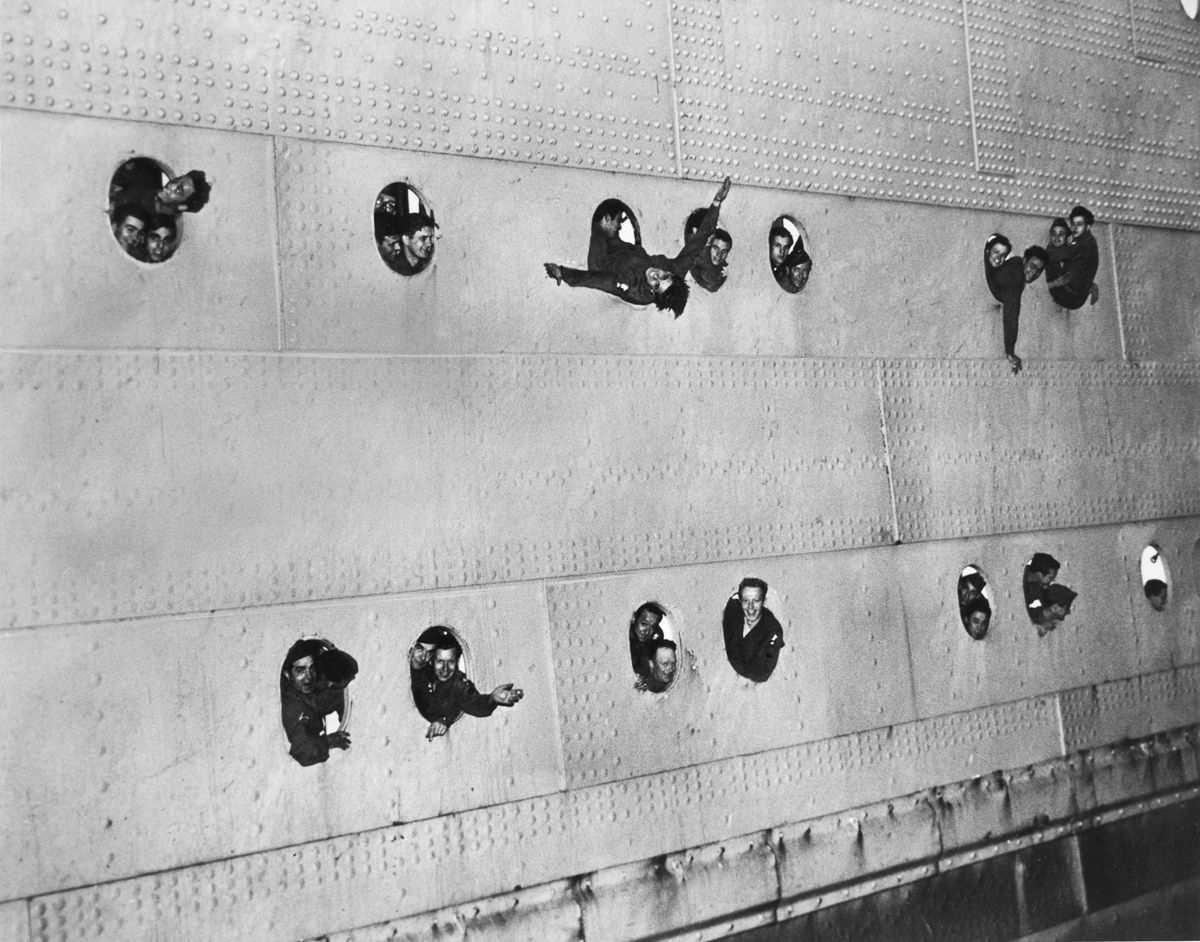
1945 Military personnel wave from the portholes of a ship.
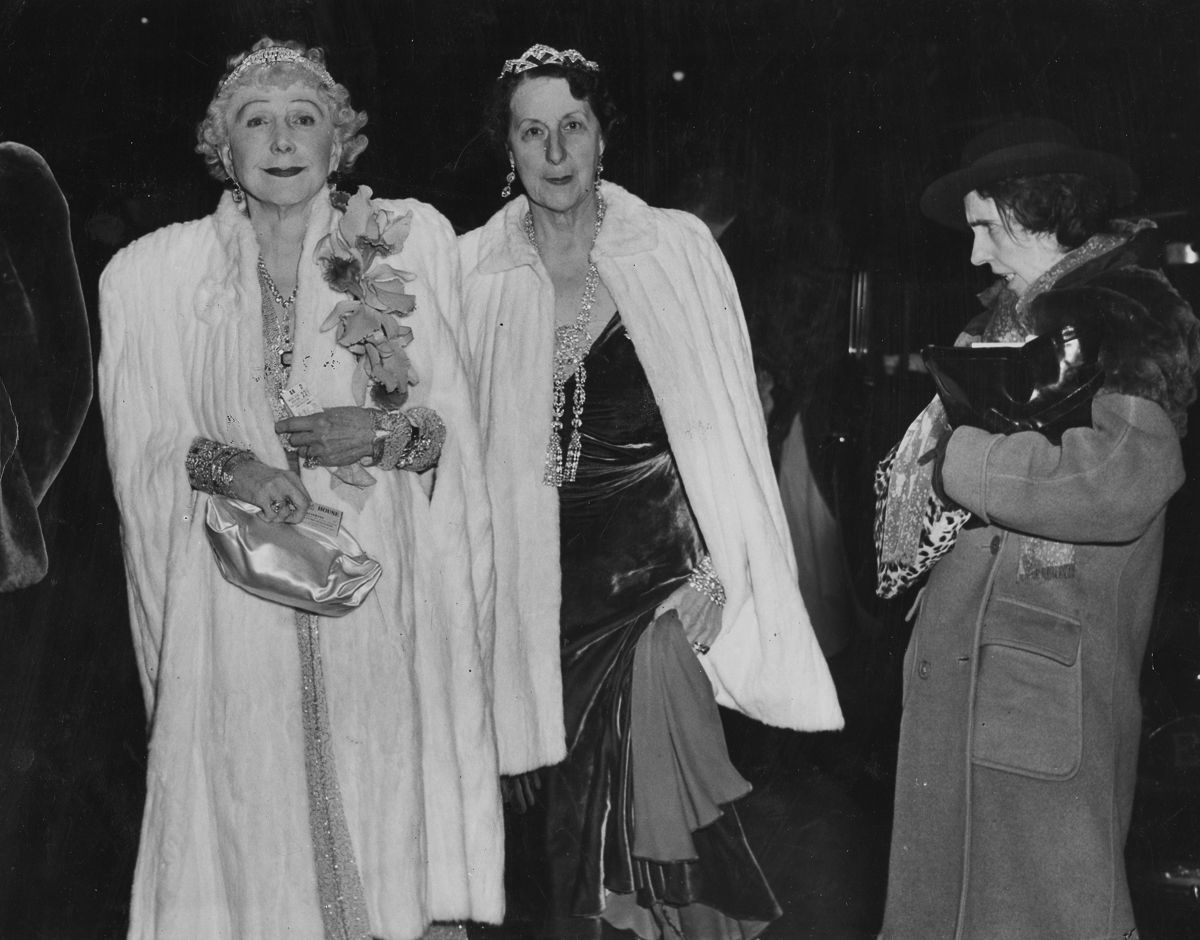
July 27, 1945 The Critic.
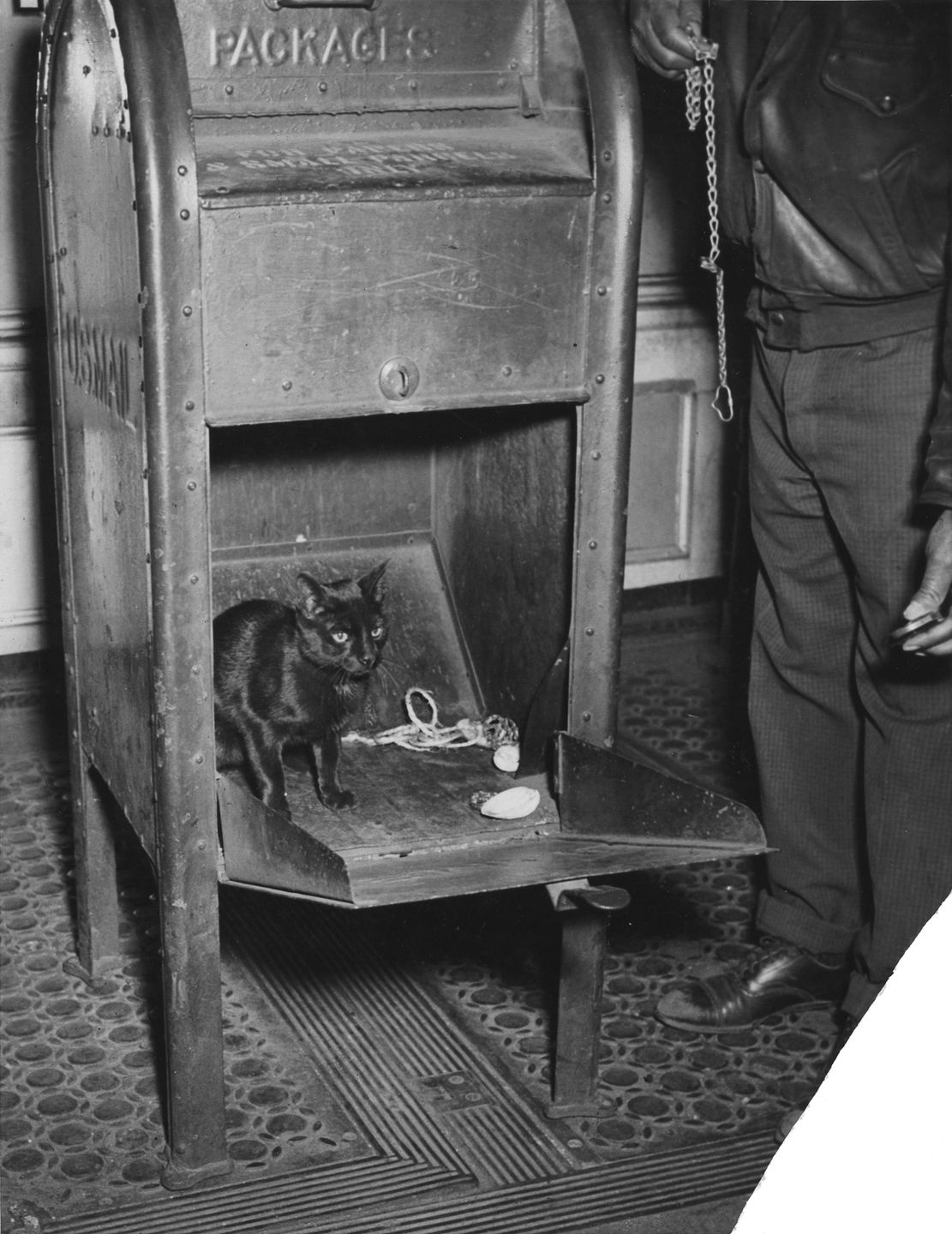
April 29, 1941 A black cat found dropped in a mailbox on West 42nd Street with some pretzels and clams to snack on.
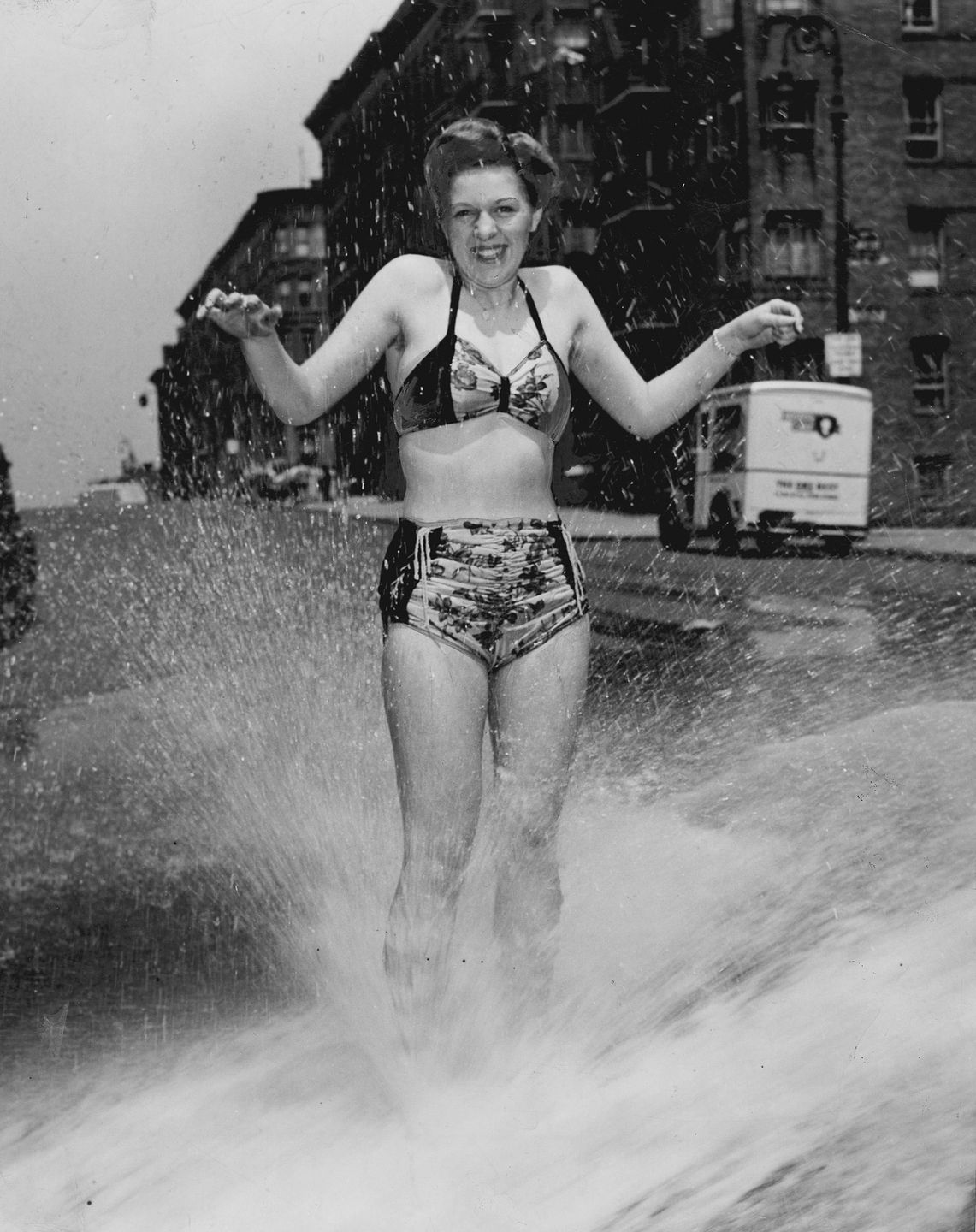
June 14, 1945 Keeping Cool.
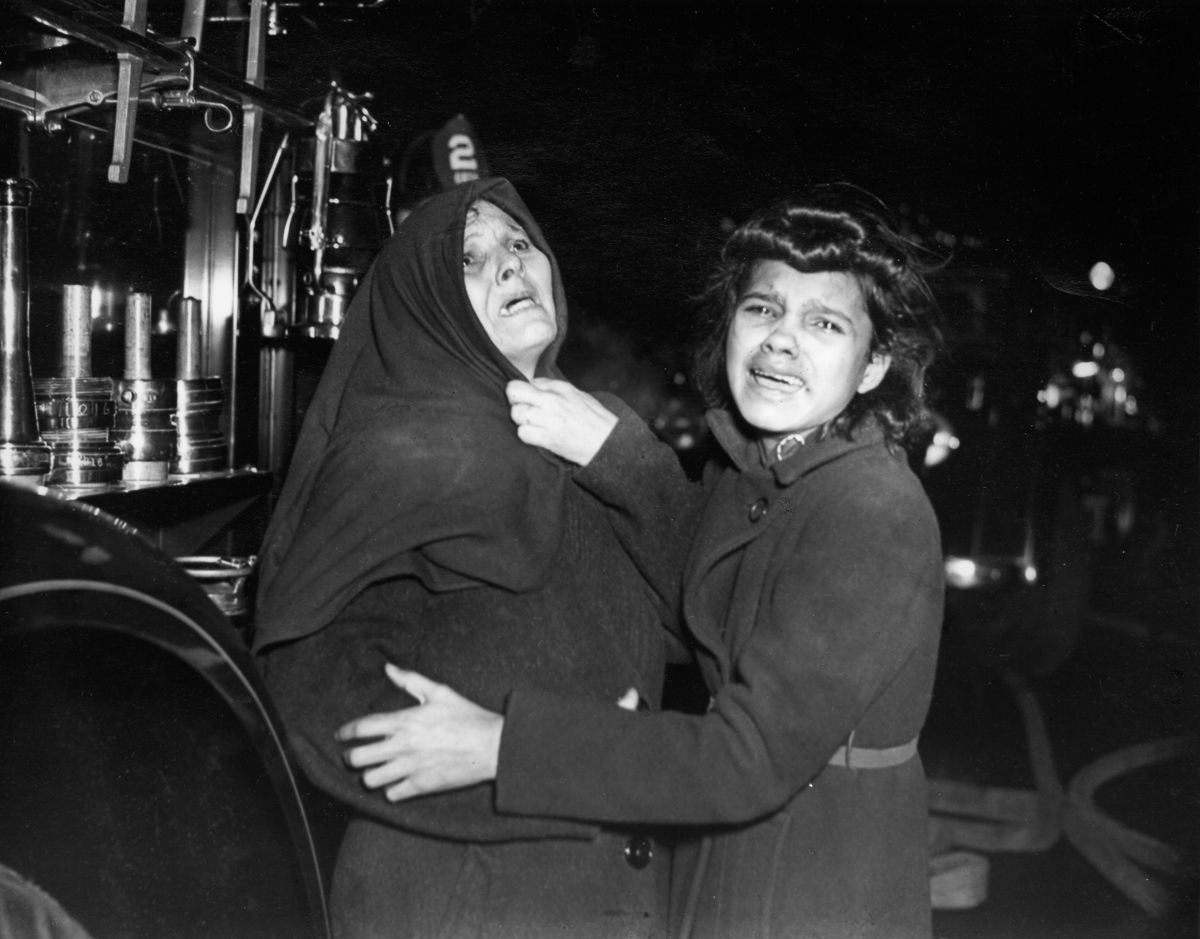
Dec. 15, 1939 Henrietta Torres and her daughter Ada outside a deadly tenement fire in Brooklyn.
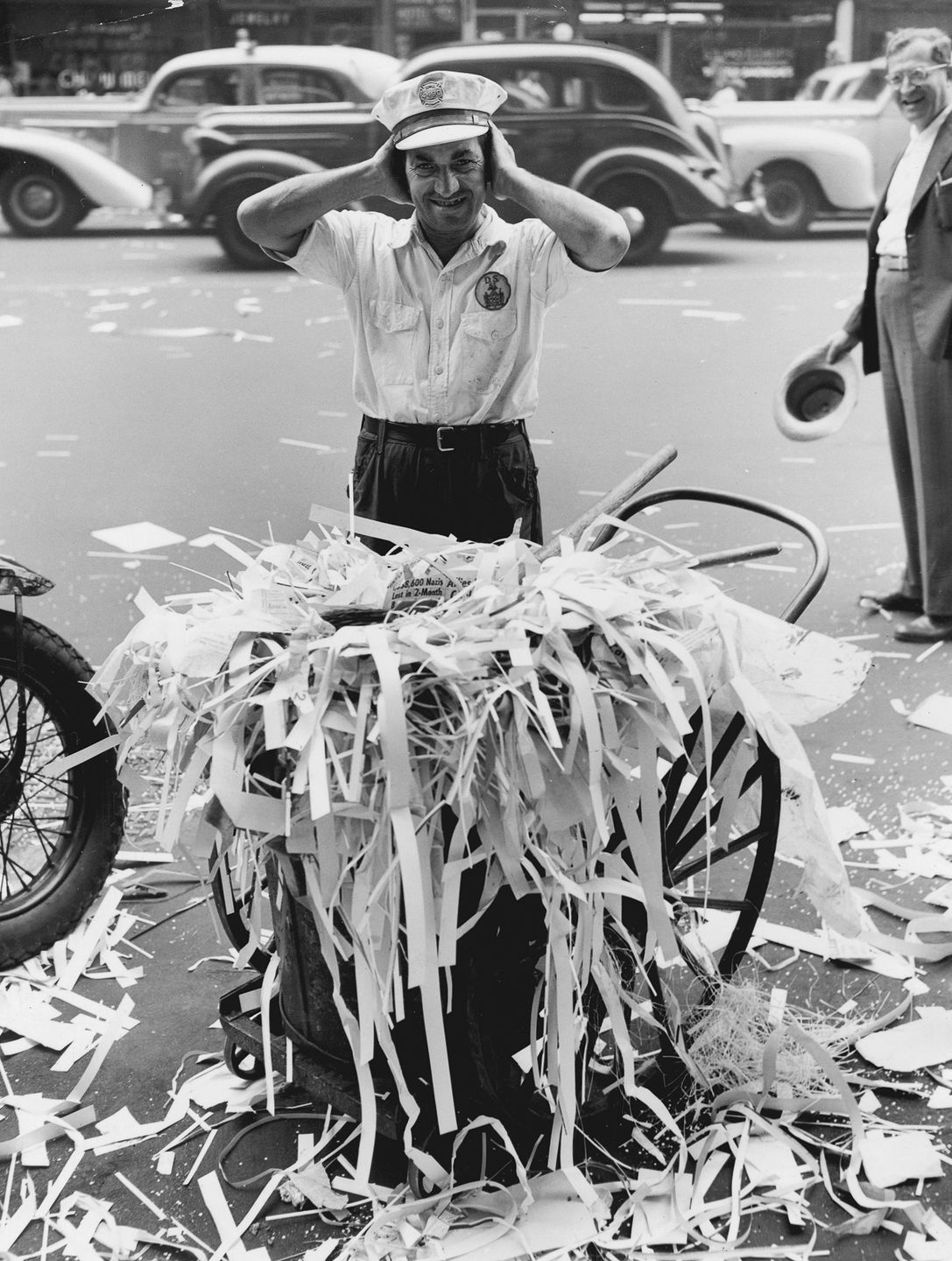
Sept. 8, 1943 It’ll be a Pleasure.
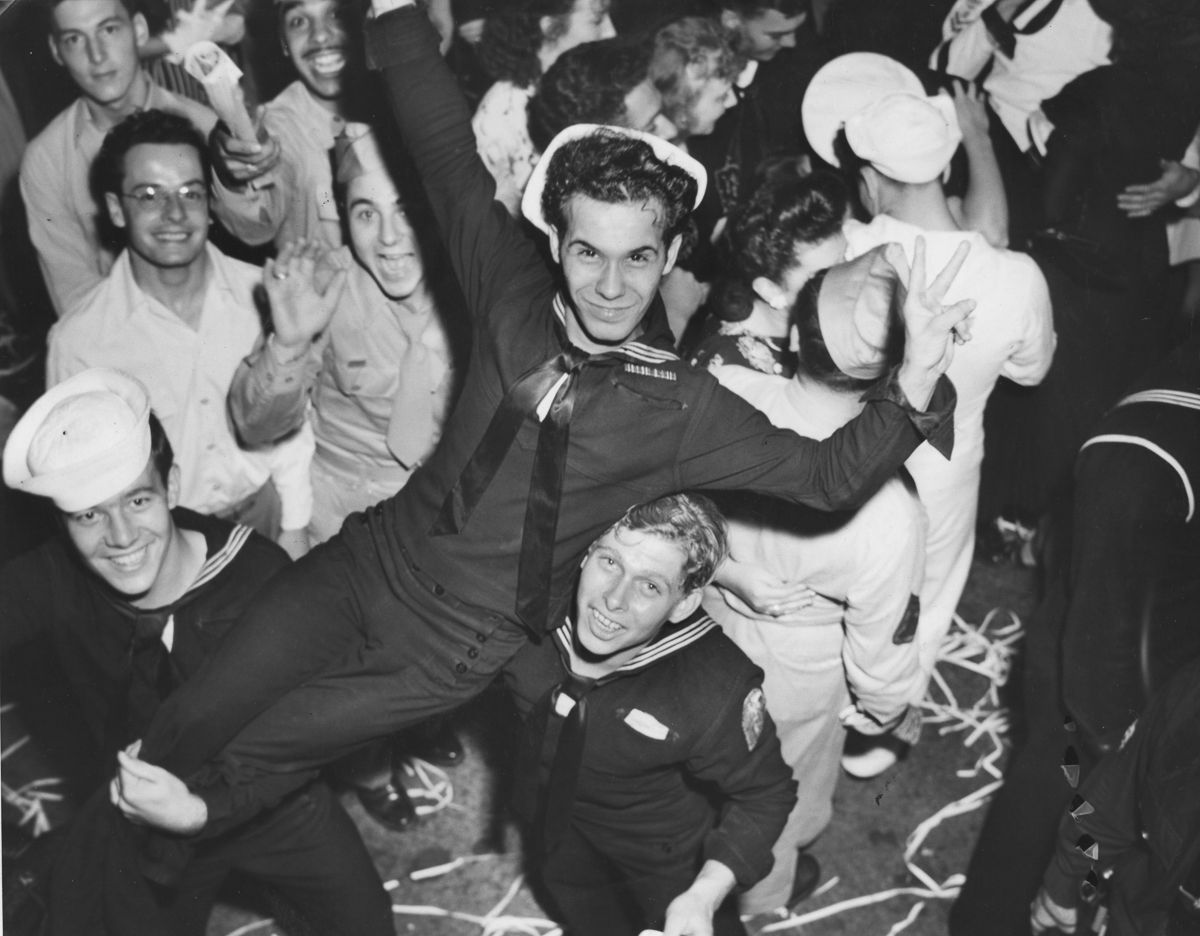
Aug. 14, 1945 Sailors celebrate VJ Day.
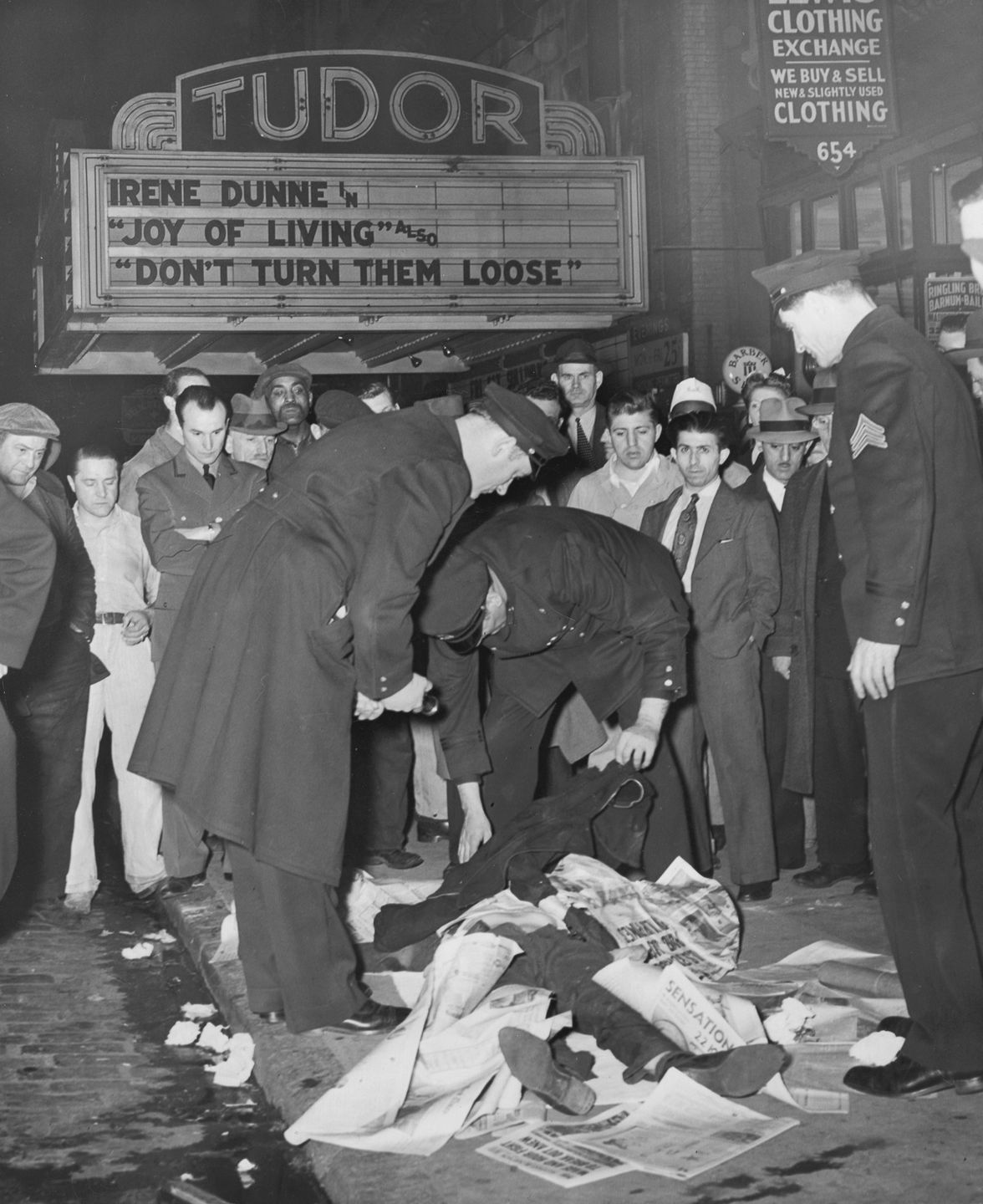
April 16, 1942 Crash Victim.
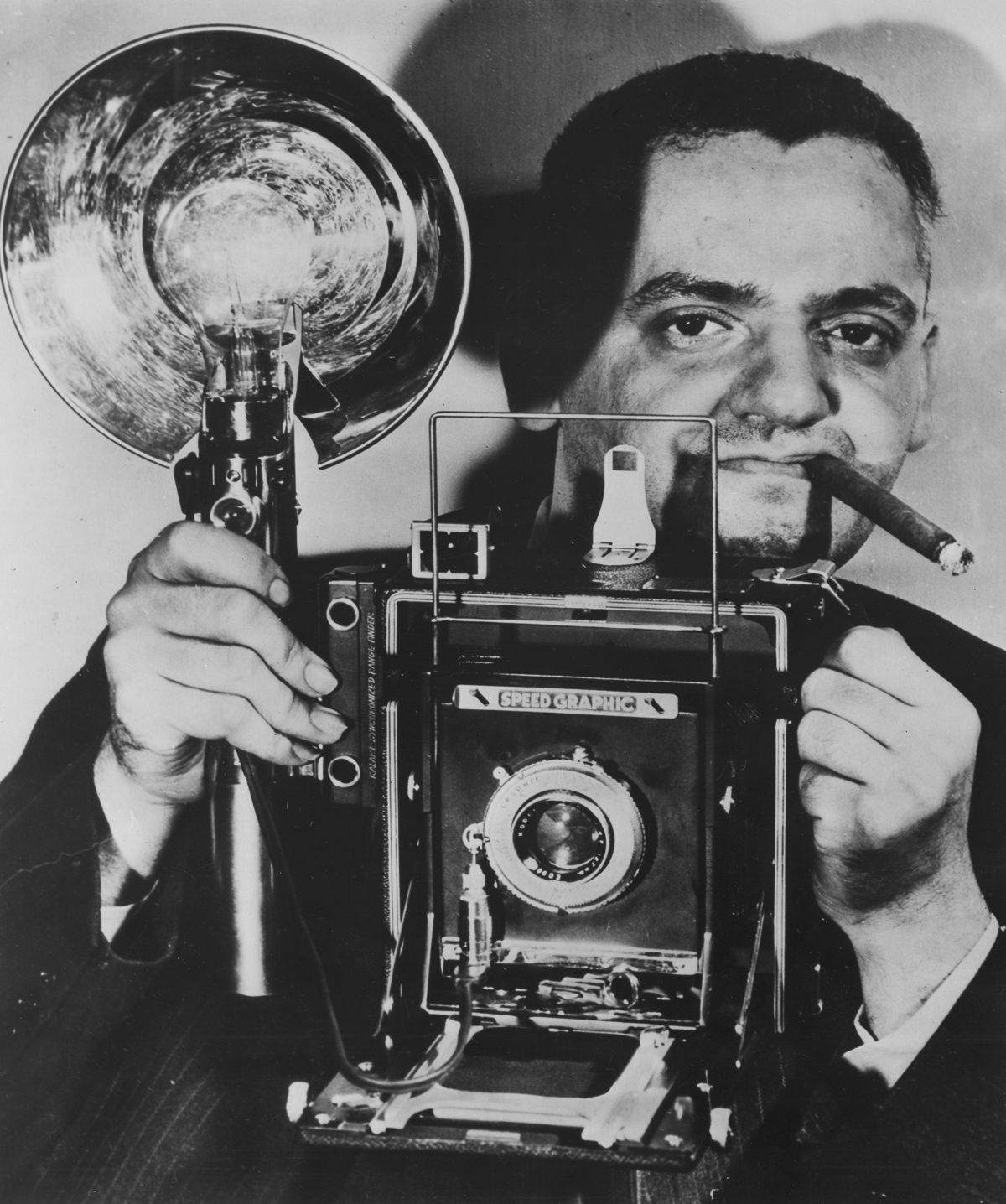
c. 1946 Weegee the Noted Photographer.
Would you like to support Flashbak?
Please consider making a donation to our site. We don't want to rely on ads to bring you the best of visual culture. You can also support us by signing up to our Mailing List. And you can also follow us on Facebook, Instagram and Twitter. For great art and culture delivered to your door, visit our shop.



